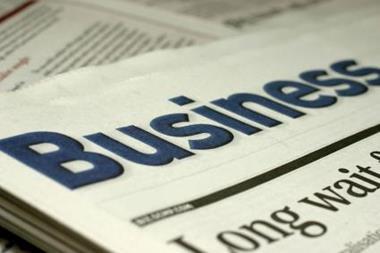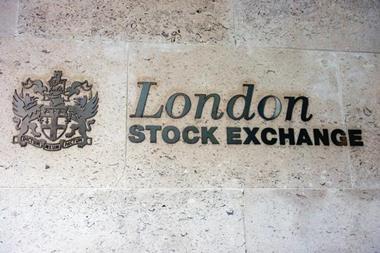Reputation is a social concept that rests on individuals' beliefs and perceptions. It has grown into a significant economic factor, often now considered within organisations as an intangible asset. When considering how to assign a value to reputation, the most sensible approach is probably to compute it as the difference between the market value of the stock and the total of tangible assets and those intangible assets readily assessable, such as leases, licences, etc.
Although reputation is an intangible asset to which no value is assigned by accounting conventions, it is, undoubtedly, one of the most valuable assets of any company, and particularly of a global financial institution. Most organisations have also come to consider reputation as their most vulnerable asset(1); however this may stem from an over-estimate of the real costs and possibly of the benefits associated with it. Most scholars and practitioners seem to agree with Warren Buffet, CEO of Berkshire Hathaway, that 'It takes 20 years to build a reputation and five minutes to destroy it.'
As is the case with many other 'risky' situations, attacks on reputation can prove to present an organisation with opportunities as well as threats. The balance between opportunity or threat will probably depend, at least in part, on how major shareholders perceive the executives' behaviour in the crisis. So what are the root causes that lead to disaster in some cases and asset improvement in others? Investigating this requires that we take a global approach.
The main drivers
If reputation risk is 'any action, event or circumstance that could adversely or beneficially have an impact on an organisation's reputation', the drivers of reputation and sources of potential risk need to be identified, analysed and managed. As reputation is most often considered as 'a collection of perceptions and opinions, past and present, about an organisation which resides in the consciousness of its stakeholders' (Rayner, 2003), it appears absolutely necessary to get a better grasp on the main drivers. As a start, it is reasonable to accept the hypothesis that a good reputation relies on achieving alignment between:
- an organisation's goals and values
- its conduct and actions
- the expectations and experience of its stakeholders.
We carried out a study in the (re)insurance industry to look at how executives in this sector viewed reputation and risk. Although the survey sample was small and the results do not lend themselves to hasty generalisation, the position and experience of the respondents as well as the visibility of their organisations, give credit to the main trends that can be inferred from their answers.
Whereas 83% of the respondents believe reputation to be a key factor in reaching their company's strategic objectives(2), only 16% have formalised quantification processes (metrics) to measure and monitor their company's reputation. Most of them (58%) use informal information and published ranking to measure it. For 75% of the interviewed directors, the key drivers are 'claims handling and insured satisfaction' and 'financial soundness'. These two drivers seem to be the essentials, since they also appear at the top of the ranking when individuals were asked to rank the same drivers on a severity scale. The close runners up among the key drivers are 'ability to attract and retain best talents', 'cover extension and quality' and 'effectiveness in doing business globally'.
Although it is very popular with the media, 'sustainable development' was not cited once. It may be that the insurance executives do not feel directly concerned, because they represent a service industry.
Customers appear to be the principal stakeholders in influencing a firm's reputation (83% of respondents), with the second most important stakeholder being the firm's personnel (58% of respondents viewed them as 'very important'). Half the sample considered the CEO's reputation very important and it was considered moderately important by one third; on the other hand, most considered the choice of a successor as very important. The impact of stockholders and public officials is not so clearly recognised. Media are not perceived as important, but that may be cultural: most respondents are French, and media are generally considered as not very trustworthy in France. Trade unions (50% moderately important and 42% no impact) and plaintiff attorneys (42% very important and 58% moderately important) were never classified as 'essential'.
Nor is the internet perceived by the present generation of (re)insurance industry leaders as an essential determining factor for a firm's reputation. Whereas 42% class it as very important and 42% as moderately important, 75% say they do not monitor blogs or forums. These answers should be qualified, since most firms consider information and communication technologies (ICT) a serious matter, although it often appears they do not know how to take full advantage of their possibilities. Furthermore, economic intelligence consultants have recently started offering services to monitor open information sources and the availability of such services may soon change the understanding of the whole field by directors and executives.
Our questionnaire offered the opportunity for the respondents to add their own thoughts on reputation. Some of the comments are extremely enlightening.
- "The instability of employment, the ever more demanding output per person, together with intense reporting tend to create a society where it is more important to conform than to be true to oneself.
"In the service industry particularly, reputation rests heavily on professionalism. Professionalism is hard to maintain when the workload consists mainly of reporting and self-promotion so that colleagues and bosses know what one has done to fulfil internal needs. The hazard is that the very essence of a profession, serving the community and enhancing reputation, is impaired by heavy management structures, keen on pleasing stockholders rather than customers."
- "Satisfying at the same time shareholders', financial analysts' and policyholders' (sometimes contradictory, sometimes complementary) expectations is becoming more difficult every day. With ever growing information and communication flows, rating agencies and financial analysts have gained a key position in establishing corporate reputation in the insurance industry. For their part, reinsurers have a duty to keep the right balance between maximising shareholders' value and satisfying most of the needs of their ceding companies. In fact, a positive appraisal of the company by both groups is essential to its corporate reputation and to its future success."
From Figure 1, it is clear that the common factor underlying all the major threats to reputation is the way in which the firm understands its duty to society. Neglect of this puts at risk its 'social licence to operate'.
CSR and corporate reputation
Reputation is built on the history and the culture of the business. Therefore, duty and obligation, corporate social responsibility (CSR), ability to internalise the concept of sustainable development, financial health, global strategy, and integrated risk management are key elements. However, even within this list, the importance of each of in building stakeholders' trust varies substantially. CSR is surely one of the visible drivers of reputation and, at the same time, on its own merit a constituent of the moral and financial patrimony of the firm and a source of professionalism, although an intangible asset.
The fall of the Berlin Wall and the ensuing demise of Communism in Eastern Europe seemed to have ensured final victory for the liberal economy model. However, it has apparently prompted a wave of laissez-faire in executive suites, where even the directors' and shareholders interests' have been apparently all but forgotten or, at best, put second to executive remuneration packages. It is, however, generally accepted that, possibly under public pressure, towards the end of the last decade of the twentieth century and since the beginning of the twenty-first, organisations have become more and more conscious of their responsibilities, be they economical, environmental or even societal. Is this myth or reality and if true can the reasons be unearthed?
The reality is reflected in the creation of new positions in many businesses, and especially in financial institutions, to ensure conformity with legislation and regulations, and with a clear focus on legal risk management, specifically on directors' and officers' potential criminal liability. These positions bear different names and cover different domains; they are 'compliance officer', 'ethics manager', 'chief risk officer', etc. It is not enough today to communicate on risk; directors and officers must make sure that effective and robust processes are designed and implemented to manage all risks in an integrated fashion, the so-called holistic approach. Furthermore, communication on risk cannot be limited to press releases polished by the PR department. "Communication (on risks) is an interactive process of exchanges of information and opinion (with the various stakeholders) involving multiple messages about the nature of risk and risk management" (Australian risk management guidelines HB 436:2004).
Most of the legislation and recommendations on corporate governance in Europe and the US, as well as South Africa and Australia, are aimed at achieving two goals: transparency and accountability. This is achieved in particular through the recruitment of non-executive board members, whose responsibility is to represent the shareholders' interest and also society's at large. Furthermore, most codes or legislation recommend that the audit, risk management and remuneration committee be constituted only of non-executive or independent board members.
A prominent voice in the risk management community continues to stress the vital role of holistic risk management. In his lecture to the Institute of Risk Management last year, Felix Kloman said: "I maintain the primary goal (of risk management) must be that of building and maintaining trust, the confidence that various stakeholders have in any organisation, be it governmental, non profit or corporate. We spend far too much time and energy thinking about costs, or profits, or shareholders, and thereby dilute our effectiveness even as we satisfy the number crunchers. Trust is in especially short supply in the area of financial services, in which blatant and continued conflicts of interest have eroded the very condition that is essential to this marketplace."
One of the keys to governance is learning from the past, and in that respect one UK risk manager likes to stress, "Never make the same mistake once". He means that most major disasters are preceded by a 'dress rehearsal' in which it is mere chance that the necessary conditions are not aligned. Therefore, good governance and good risk management command one to take a careful look at near misses. They may be a warning signal.
Governance is about transparency and being open to the needs of the environment in which the firm operates, including the need for safety and stability, moving from a closed system to an open system integrated in a global network. The main characteristics are illustrated in the table, inspired by Larkin (2003).
The risks that are quantifiable in financial terms still remain the focus of too much attention in many corporations whereas 'there is an emerging consensus among governments, regulators, investors and other stakeholders around the globe that shareholders are just one of a number of stakeholders groups whose interest and concerns need to be taken into account if a business is to flourish and enjoy long term success' (Rayner, 2003). The importance of governance can never be overestimated. Figure 2, taken from Jenny Rayner, illustrates the relationship between governance, transparent disclosure and reputation through the establishment of open channels of communication with all stakeholders. However, the potential conflict between economic intelligence and transparency should never be underestimated, especially with the promotion of 'open source intelligence' which allows competitors to decipher strategic plans through the information published in different media.
Good practice
'In the US the CEO is king; chief executives are the people who heroically run the world virtually unquestioned and with little regard for the board as a significant balance of power in the organisation. However the pervading sense of corporate greed and paucity of transparent governance is eroding investor confidence and, crucially, wider public trust' (Larkin, 2003).
These words echo a time that is not very far in the past and possibly still very much alive in economic domains where no legislation imposes a transparent management style. Could it be that ethics, sustainable development and social responsibility, as commonly mouthed by those in charge, may well prove nothing more than good intentions? Could reputation be another fashionable concept that lacks a generally accepted content to give it reality? There is no denying its financial value, as is clearly evidenced by the stock prices of the most recognised names in their markets. Clearly, the more trust that is involved in a transaction, the more important is the reputation.
The following recommendations and expectations are inspired by both Jenny Rayner and Judy Larkin. They are divided into four areas that address the need for an ongoing process to assess and mitigate risk to reputation as well as enhance the opportunities that can arise from the trust enjoyed with stakeholders. They stress the impact of leadership in the definition of values and installing the right controls to enforce these values through strategic goals as well as daily actions by all those associated with the organisation.
Good practice in responding to reputational risks
- Using all available information (eg employee/client/supplier surveys, investor questionnaires, stakeholder dialogue, web activity)
- Lateral thinking to establish useful controls and early warning indicators
- Turning reputational threats to competitive advantage
- Identifying opportunities.
The top team's role is vital in:
- Communicating the vision and values
- Setting the organisational climate
- Establishing policies to guide behaviour and decision making
- Using outputs from risk management/stakeholder dialogue as a foundation for future strategy development
- Ensuring the risk management process embraces reputational and social responsibility issues
- Deciding how much risk the organisation should tolerate
- Striving to maintain exposures within those limits
- Ensuring that everyone in the organisation understands what level of risk they are empowered to take on behalf of the organisation.
Planning for the future
- Anticipating shifts in stakeholder expectations and in regulatory requirements: acting accordingly
- Seeking to differentiate yourself from others in the same sector
- Anticipating and limiting collateral damage
- Having reputational risk on the board's agenda.
The benefits of positive reputation risk management
- Builds trust and confidence
- Maintains the 'social licence to operate'
- Attracts investment
- Boosts customer and supplier loyalty
- Reduces regulatory intervention
- Creates barriers to entry
- Facilitates premium pricing
- Enables recruitment of the best
- Provides a store of reputational capital that protects against future crises.
All the recommendations and expectations listed above can be summarised in one simple commandment: promote a virtuous circle of reputation building.
The final words we borrow from Madeleine Albright, former US secretary of state. While addressing the subject of risks of war, terrorism and deadly pandemics and reflecting on her work during the Clinton administration at a Marsh breakfast during the RIMS convention in Honolulu earlier this year, she gave this essential piece of advice to risk management and insurance leaders: "Decisions are only as good as the information you have ... Although the crisis for which you prepare may never happen, one will happen ... Being prepared for a crisis is never a waste of time."
(1)'Reputation Risk of Risks', The Economist Intelligence Unit (2005), White Papers.
(2) According to Hill & Knowlton: 86% of executives polled in France & 94% in the USA.
- Sophie Gaultier-Gaillard is from Universite Paris 1-Sorbonne, E-mail: sophie.gaultier-gaillard@univ-pari^s1.fr, Jean-Paul Louisot is from the CARM Institute, E-mail: jp.louisot@carm-institute.fr
A longer version of this article is in the Geneva papers on risk management.


















